-
Homepage
-
Sealing knowledge
- Materials
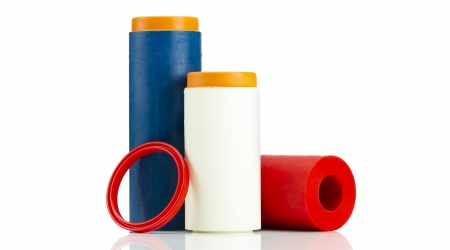
Thermoplastic elastomers (polyurethane materials)
The thermoplastics are fusible, highly polymeric materials that are much harder and stiffer than elastomers in their application temperature range. Depending on their chemical structure, their property profile ranges from hard and brittle to tough and flexible.
Thermoplastic Elastomers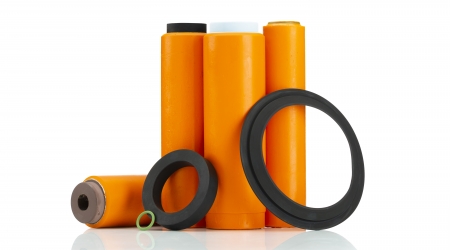
Elastomers (rubber materials)
The rubber materials are high polymers whose macromolecules are extensively cross-linked by the addition of vulcanizing agents. Due to this crosslinking, they are not meltable and decompose at high temperatures. Furthermore, the crosslinking has the effect that rubber materials are insoluble and, depending on the medium, swell or shrink to a lesser extent.
Elastomers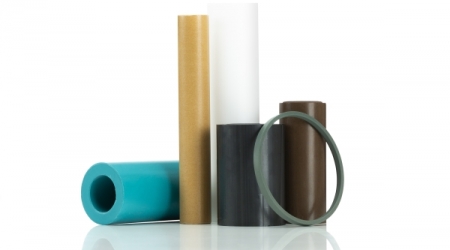
Thermoplastics
Thermoplastics, also called plastomers, are plastics that can be softened and deformed in a certain temperature range. This process is reversible, i.e. it can be repeated as often as desired by cooling and reheating to the molten state. The so-called thermal decomposition of the material must not start due to overheating.
ThermoplasticsThermoplastic Elastomers
Due to their morphological structure, greater elongations are not reversible and the moulded part remains plastically deformed, which is why the materials are also called plastomers.
Plastomers are used in sealing technology for hard sealing elements such as back-up rings, guide rings and bushings, pressure and support rings, etc. Here you can see all details about the materials for PU, HPU, HPU solid, HPU Mos2 seals.
| Werkstoff | Farbe | Zulassung FDA, KTW etc. | Temperatur Angabe in °C | Shore A DIN53505 | Shore D DIN53505 |
|---|---|---|---|---|---|
| PU rot | FDA | -30 - 115 | 94 (± 3) | 49 (± 3) | |
| PU grün | - | -30 - 115 | 94 (± 3) | 49 (± 3) | |
| T-PU | - | -50 - 115 | 94 (± 5) | 47 (± 3) | |
| HPU solid | - | -30 - 110 | - | 58 (± 3) | |
| PU Mos² | - | -30 - 110 | 94 (± 3) | 49 (± 3) | |
| PU - FDA | FDA, EU1935/2004, EU10/2011 | -30 - 110 | 93 (± 3) | 46 (± 3) | |
| PU mellow | - | -30 - 95 | 86 (± 3) | - | |
| HPU-P | FDA | -20 - 115 | 95 (± 2) | 48 (± 3) |
Thermoplastics
Thermoplastic elastomers are materials that exhibit the characteristic properties of elastomers across a broad temperature range. Yet, they are not chemically cross-linked. Because of this, they can be melted at high temperatures and processed using standard thermoplastic techniques. Thermoplastic elastomers are soluble and, in general, show less swelling compared to their chemically cross-linked counterparts. Viton® (FKM, FPM) and PTFE (Teflon) sealing material are examples of such materials.| Werkstoff | Farbe | Zulassung FDA, KTW etc. | Temperatur Angabe in °C | Shore A DIN53505 | Shore D DIN53505 |
|---|---|---|---|---|---|
| POM | FDA | -50 - 90 | - | 85 (± 3) | |
| PA6G | - | -40 - 110 | - | 85 (± 3) | |
| PTFE virgin | FDA | -200 - 260 | - | 55 (± 3) | |
| PTFE glass | - | -200 - 260 | - | 58 (± 3) | |
| PTFE bronze | - | -200 - 260 | - | 60 (± 3) | |
| PTFE carbon | - | -200 - 200 | - | 62 (± 3) | |
| PEEK | FDA | -65 - 240 | - | - | |
| UHMW-PE | - | -200 - 80 | - | - |
Elastomers
See also more details about NBR seals and gaskets, EPDM sealing material.
| Werkstoff | Farbe | Zulassung FDA, KTW etc. | Temperatur Angabe in °C | Shore A DIN53505 | Shore D DIN53505 |
|---|---|---|---|---|---|
| NBR | - | -35 - 110 | 85 (± 5) | - | |
| NBR 90 | - | -30 - 110 | 90 (± 5) | - | |
| NBR FDA | FDA, EU 1935/2004 | -30 - 105 | 88 (± 5) | - | |
| NBR mellow | - | -35 - 110 | 73 (± 5) | - | |
| NBR taiga | - | -50 - 105 | 82 (± 5) | - | |
| NBR detec | FDA, EU 1935/2004 | -30 - 105 | 89 (± 5) | - | |
| X-NBR solid | - | -30 - 110 | 89 (± 5) | - | |
| H-NBR diet | FDA, EU 1935/2004 | -30 - 150 | 82 (± 5) | - | |
| H-NBR solid | - | -20 - 150 | 95 (+/- 5) | - | |
| H-NBR ED | - | -30 - 150 | 88 (± 5) | - | |
| H-NBR mellow | - | -35 - 150 | 75 (± 5) | - | |
| H-NBR detec | FDA, EU 1935/2004 | -30 - 150 | 82 (+/- 5) | - | |
| EPDM standard | - | -45 - 135 | 87 (± 5) | - | |
| EPDM spring | W270 D1, WRAS BS6920-1:2000, EU 1935/2004 | -50 - 135 | 87 (± 5) | - | |
| EPDM FDA | FDA, EU 1935/2004 | -55 - 135 | 88 (± 5) | - | |
| EPDM mellow | - | -53 - 135 | 76 (± 5) | - | |
| EPDM FDA mellow | FDA, EU 1935/2004 | -50 - 135 | 77 (± 5) | - | |
| EPDM detec | FDA, EU 1935/2004 | -50 - 135 | 84 (± 5) | - | |
| MVQ weiß | FDA, EU 1935/2004 | -60 - 210 | 84 (± 5) | - | |
| MVQ blau | FDA, EU 1935/2004 | -60 - 210 | 84 (± 5) | - | |
| MVQ rot | FDA, EU 1935/2004 | -60 - 210 | 83 (± 5) | - | |
| MVQ transparent | FDA, EU 1935/2004 | -60 - 210 | 79 (± 5) | - | |
| MVQ detec | FDA, EU 1935/2004 | -60 - 210 | 88 (± 5) | - | |
| FPM | FDA, EU 1935/2004 | -25 - 220 | 85 (± 5) | - | |
| FPM FDA | FDA, 3A-Sanitary Class I, EU 1935/2004 | -25 - 210 | 84 (± 5) | - | |
| FPM ED | - | -25 - 215 | 88 (± 5) | - | |
| FPM BS3 | - | -20 - 220 | 80 (± 5) | - | |
| FPM mellow | - | -25 - 220 | 74 (± 5) | - | |
| FPM detec | FDA, EU 1935/2004 | -25 - 210 | 87 (± 5) | - | |
| FVMQ | - | -55 - 230 | 90 (± 5) | - | |
| AEM | - | -30 - 150 | 87 (± 5) | - | |
| CR | - | -40 - 100 | 81 (± 5) | - | |
| Aflas® ED | - | -10 - 220 | 87 (± 5) | - |

Get in touch with us!
We perform best under pressure! Personalized advice for the highest demands and a fast delivery guarantee ensure your satisfaction. Contact our sealing experts.
We look forward to your inquiry."
Interesting Facts from Sealing Technology
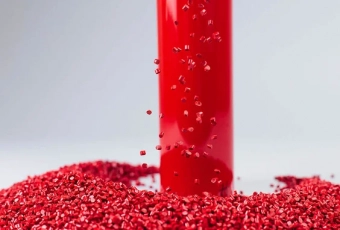
Sealing Materials, and Elastomers: An Overview
Elastomers, as sealing materials, encompass various substances for specified applications in seal engineering. Elastomers are dimensionally stable and elastically deformable plastics. A prime example is rubber bands. While they maintain their shape, they also possess elastic characteristics and tensile stress due to an entropic effect (entropy elasticity). Elastomers are cross-linked through covalent bonds between molecule chains (macromolecules), similar to thermosetting plastics. This rubber-like elasticity occurs as the tangled polymer chains respond to tensile stress by stretching or disentangling.
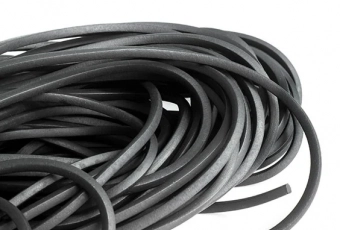
What is an NBR seal?
What are NBR seals? Acrylonitrile Butadiene Rubber | Nitrile Rubber Elastomer with excellent mechanical properties - learn everything!
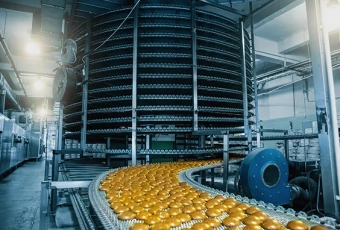
VITON® Seals and Gasket - What is the material FKM, FPM
What are Viton seals? An Overview of FKM and FPM | Fluorocarbon Elastomers for the Food, Pharmaceutical, Oil, Automotive, and Aerospace Industries - Discover Everything!
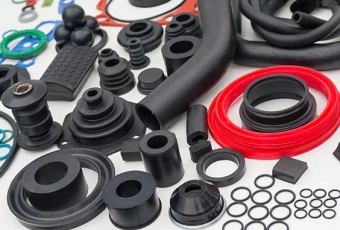
What are EPDM seals?
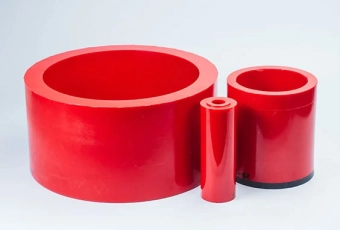
What are HPU seals?
What are HPU, HPU solid and HPU-MOS2 seals? HPU stands for hydrolysis-resistant PU and is a further development of polyurethane (PU, DIN abbreviation: PUR)





